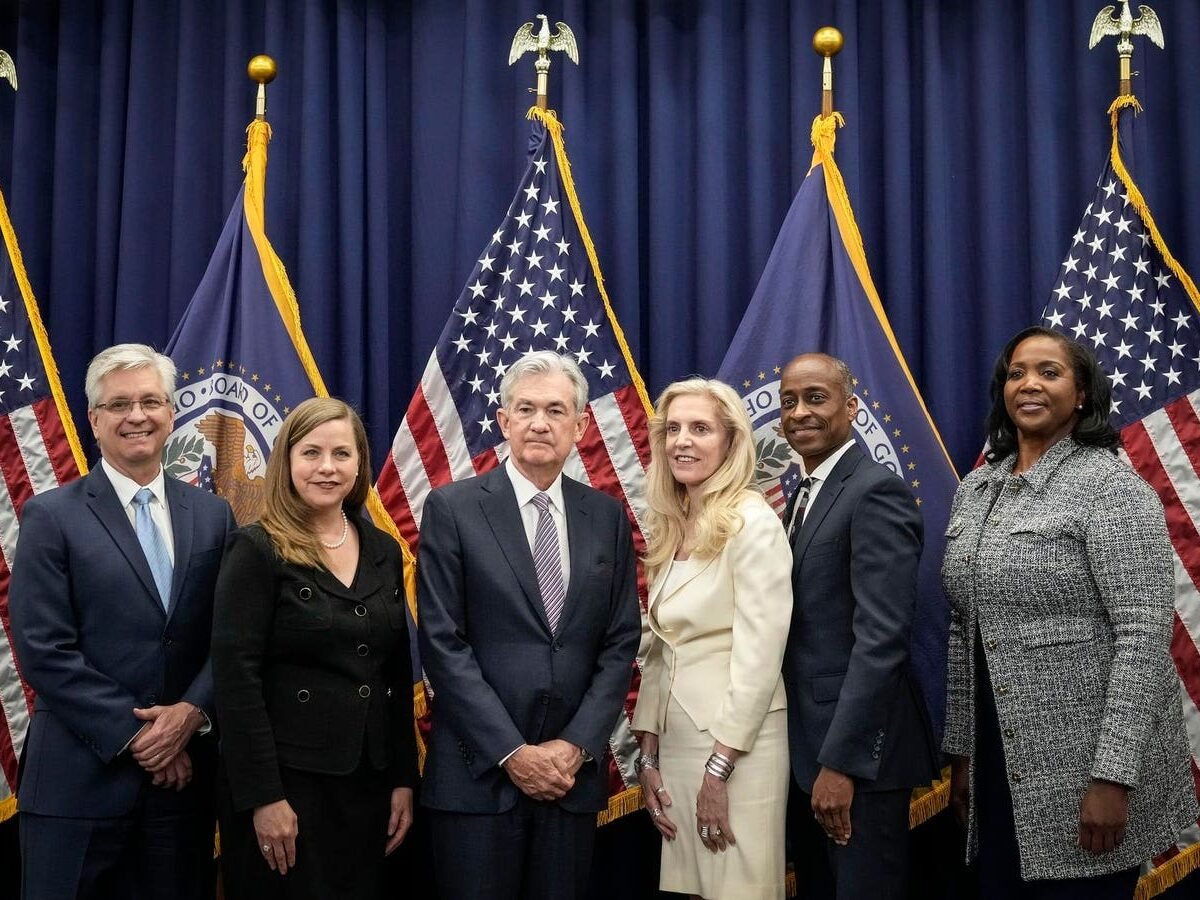WASHINGTON, DC – MAY 23: (L-R) Members of the Federal Reserve Board of Governors Christopher Waller, … [+]
In a speech delivered just weeks after January’s FOMC meeting, Federal Reserve Governor Christopher Waller outlined his vision for the maturing stablecoin market, highlighting its growing importance in retail and cross-border payments. The timing and content of the speech signal a potential shift in how traditional financial institutions view these digital assets, particularly in the foreign exchange market.
The FX Revolution Waiting in the Wings
According to Lux Thiagarajah, a former JP Morgan FX trader now at banking-as-a-service provider OpenPayd, stablecoins are poised to revolutionize the $7.5 trillion daily foreign exchange market. Speaking at the Digital Assets Summit in London earlier this month, Thiagarajah highlighted a crucial advantage: stablecoins can overcome the traditional 2-2.5 day settlement times that have long plagued FX markets.
“This is a massive operational win,” Thiagarajah explained. “The ability to settle FX trades instantly rather than waiting for multiple days could transform how institutional investors manage their currency exposure and liquidity.”
Federal Reserve Takes Notice
In his February 12th speech at “A Very Stable Conference” in San Francisco, Fed Governor Waller acknowledged the growing importance of stablecoins, particularly in cross-border payments. He specifically highlighted the emerging “stablecoin sandwich” model, where fiat currency in one country is converted to a U.S. dollar stablecoin, transferred, and then converted back to local currency at its destination.
“This has the potential to reduce the complexity of a series of correspondent banking networks, improving transparency, cost, and timeliness,” Waller noted, while emphasizing the importance of implementing proper anti-money laundering and consumer safeguards.
Are Stablecoins The New Eurodollars?
The parallels between stablecoins and the emergence of Eurodollars in the 1950s and 60s are becoming increasingly apparent. Just as Eurodollars arose from a need to hold and transfer dollars outside the U.S. banking system, stablecoins are emerging as a digital solution to similar challenges in today’s global financial system.
A recent analysis shows that stablecoins have already reached a market capitalization of over $200+ billion, with approximately 99% denominated in U.S. dollars. This dominance mirrors the dollar’s role in traditional forex markets, where it’s involved in roughly 88% of all trades.
Market Impact of Stablecoins and Institutional Response
Major financial institutions are taking notice. While traditional banks initially dismissed stablecoins as a crypto curiosity, the potential for disruption in FX markets has sparked serious consideration. The ability to settle trades instantly could reduce counterparty risk and free up capital currently tied up in settlement periods.
“The efficiency gains are undeniable,” says Thiagarajah. “When you can settle an FX trade instantly instead of waiting for days, it fundamentally changes the game for risk management and liquidity optimization.”
Waller’s speech also addressed the need for clear regulatory frameworks, particularly in the United States. “The stablecoin market would benefit from a U.S. regulatory and supervisory framework that addresses stablecoin risks directly, fully, and narrowly,” he stated, suggesting that both banks and non-banks should be allowed to issue regulated stablecoins.
As stablecoins continue to mature and gain institutional adoption, their impact on FX markets could be transformative. The combination of instant settlement, reduced counterparty risk, and 24/7 operation presents a compelling case for market participants. The recent statements from both market practitioners like Thiagarajah and regulators like Waller suggest we’re approaching a tipping point. As traditional financial institutions grapple with the implications, the question may no longer be if stablecoins will disrupt FX markets, but when and how dramatically.





